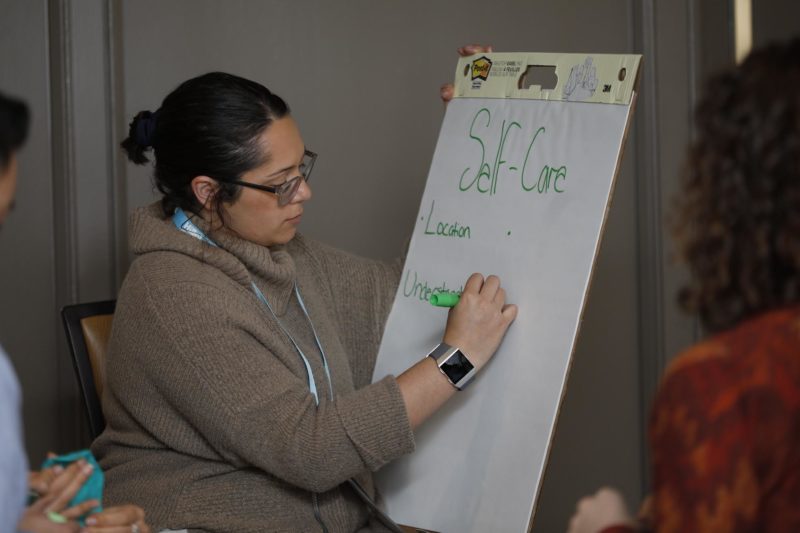Opinion
People are irreplaceable
Is the Great Resignation a great opportunity?
In Short
Nonprofits have the opportunity to refresh our staffing, reorganize and update our policies to better reflect our employees’ needs, and attract talent that is new to our field.
The numbers are in and they are telling us that people are leaving their jobs. In September 2021 alone, a record-breaking 4.4 million people left their jobs voluntarily, in pursuit of better pay, better flexibility or better quality of life. We are, as many have said, in the midst of “The Great Resignation.” As the lead recruiter for my organization, I’ve spoken to hundreds of candidates over the past few months and they want work that affords them the flexibility to work from home, at least partially, and use their time as they see fit, not according to an arbitrary standard set by their employer. This could be challenging for all of us in nonprofits who often require people to be in-person in specific locations, perhaps in our communities, synagogue buildings or on college campuses.
While the Great Resignation has so far hit the corporate world and service industry the hardest, it is coming for us in the nonprofit world too. At Hillel International we’ve invested significantly in our talent strategy and seen strikingly positive results including, above 90% retention over the last three years. Yet, we also see that only 55% of professionals in our campus locations see themselves working there in the next two years (down from 60% in 2019). These numbers tell us that we’ve got a dedicated workforce that loves their work and, at the same time, is looking for something new.


Hillel International
Our challenge over the coming months is to dive deeper into those numbers and ask: What do our people need that will help them stay? This is also a moment where our employees are evaluating their relationship to this work and asking themselves this question. How we adjust and answer these questions will determine whether the Great Resignation will ultimately hurt or help our field.
Here are a few things we can do, both as individuals and as organizations, to best prepare for the Great Resignation, and turn it into the Great Opportunity. As organizations, we can start the conversations early. We should look for signs that someone is detaching and giving signs that they’re looking to move on. We can start the conversation with our employees about their futures early so that both parties can prepare for whatever is next. You may not get answers, but you’ll signal to your employees that you’re invested in them as people and pave the way for honesty and transparency.
We also need to identify and search for top internal talent. Job functions can be shifted to other folks, but the actual people are irreplaceable. Figure out what it is that your organization needs to do to keep those folks in the organization and do it. Great folks are also already out there looking for new opportunities. Make sure your social media is up to date, that your website is user friendly, and that you’re putting the best of your organization out there.
If your organization is not allowing for some flexibility in working arrangements, you may be turning off top candidates from applying. As you fill roles, listen to what your current employees and candidates are saying about their needs and adjust accordingly. While some industries may have the option to provide more work from home options, in-person work, like social services roles and educators, may not have that ability. Regardless, we can change the way we think about the workday, and create work cultures where we can say, “Do what you need to do, and talk to your supervisor to make the proper arrangements to get your work done.”
Individuals can do soul searching too. Get yourself to the place where you can articulate what you need in your life and in your work and ask yourself if your current position is allowing for those things. Ask for what you need and determine if staying at your current organization or seeking a new opportunity is the right path for you.
Start the conversation about your own trajectory early. Once you start the conversation, you might consider what’s possible within the scope of the organization, and start on the path to finding solutions with your supervisor.
As a candidate this is a great time to look back on the past few years and articulate the ways you’ve grown as a professional and how your role may have shifted or changed throughout the pandemic. Take a look at the job description with which you started and update it to your current reality. This is also a useful exercise in preparing for conversations about your future at your current job or to look for a new role.
Nonprofits have the opportunity to refresh our staffing, reorganize and update our policies to better reflect our employees’ needs, and attract talent that is new to our field. The challenge for our organizations is to adjust to the needs of our future workforce.
David Korenthal is the associate director of talent acquisition at Hillel International. He is a graduate of the Hornstein/Heller MBA Program at Brandeis University and has worked in Jewish nonprofits for 10 years.












